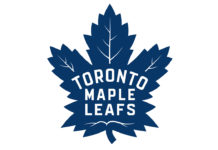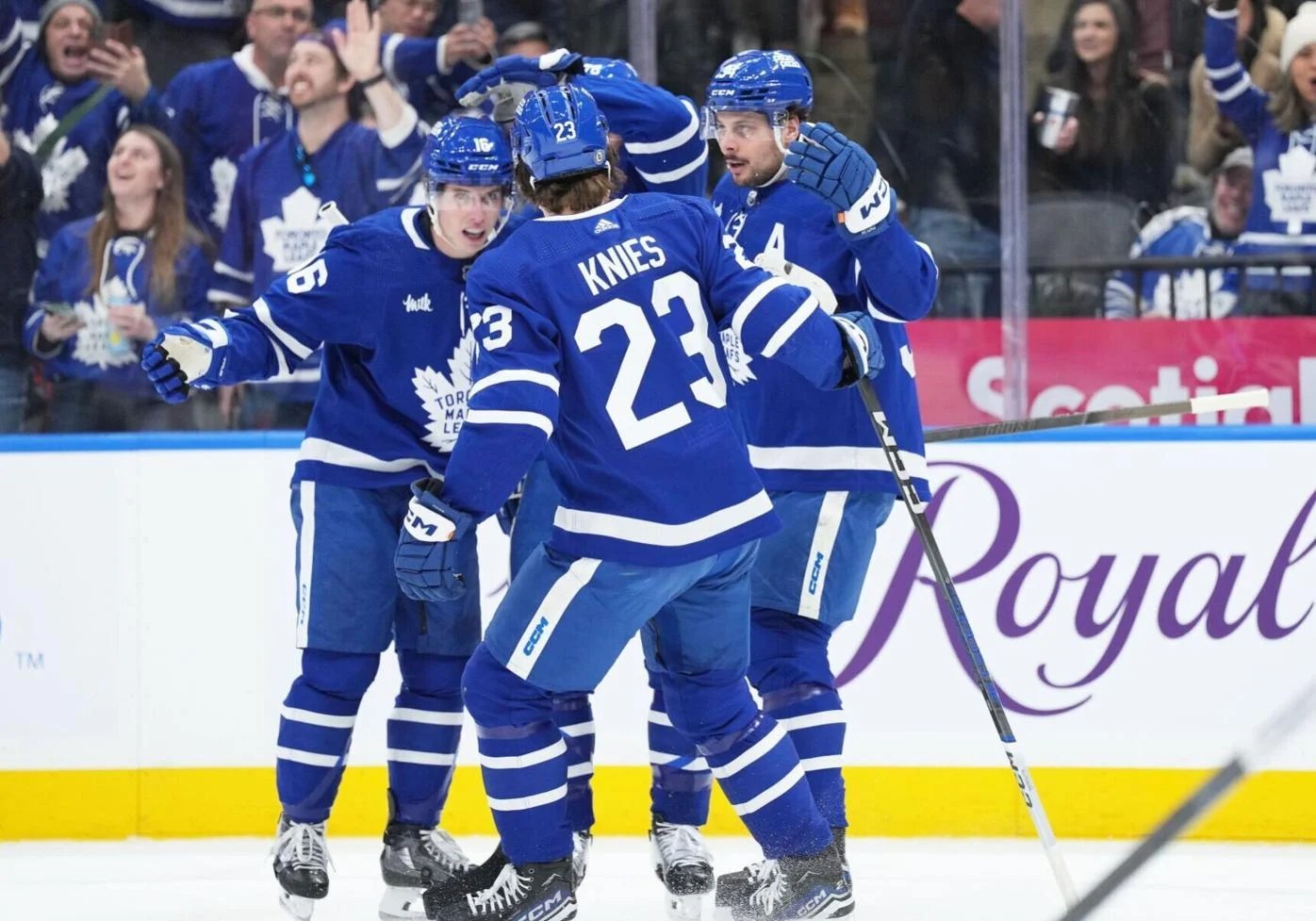Now that we’ve officially hit the dog days of August, it appears the Maple Leafs’ current roster is what they’re taking to training camp.
As things stand, it looks like the team will be more or less the same as last year’s save for two—or possibly three—defensemen, a new goalie to tandem with their incumbent, no Tyler Bertuzzi, and maybe one new face at forward (Easton Cowan, Alex Nylander, Fraser Minten, or any other potential surprise or late addition). It’s not a lot of change personnel-wise, and that will likely lead to a lot of eye-rolling among a fanbase that already considers the regular season pretty much meaningless.
As we prepare for the next regular season, I have begun to sort through the areas of focus during the season. First and foremost, I think it’s a mistake to disregard the regular season as meaningless.
Last summer, I mentioned that the Leafs should be trying to win the division, and they were all but out of that race by November. They never seriously came close to challenging to win the Atlantic at the turn of the new year. Their division winner, the Florida Panthers, won the Stanley Cup. The other division winner in their conference, the New York Rangers, played about the easiest first-round opponent we have seen in the playoffs since the Taylor Hall-led New Jersey Devils.
There are obvious rewards to winning the division, although we can find examples of teams that have achieved playoff success without doing so. The Leafs are not one of those teams. Despite making the playoffs eight straight years, they have only one playoff series win and just one division title (the Canadian division) to their name. They’ve been good in the regular season, but they rarely have been truly great.
Here is the Leafs’ finish in the league standings each year in the Matthews era:
- 14th
- Tied for sixth
- Tied for seventh
- Tied for 11th
- Tied for fifth (Covid bubble year)
- Fourth
- Tied for fourth (won the first round)
- 10th
The one time they won their division — the Covid bubble year — they suffered their worst playoff loss of this era.
All of this said, it’s important to revisit their 82-game season and evaluate what needs work, even though two weeks of playoff hockey always receive most of the attention.
Ample room to improve defensively
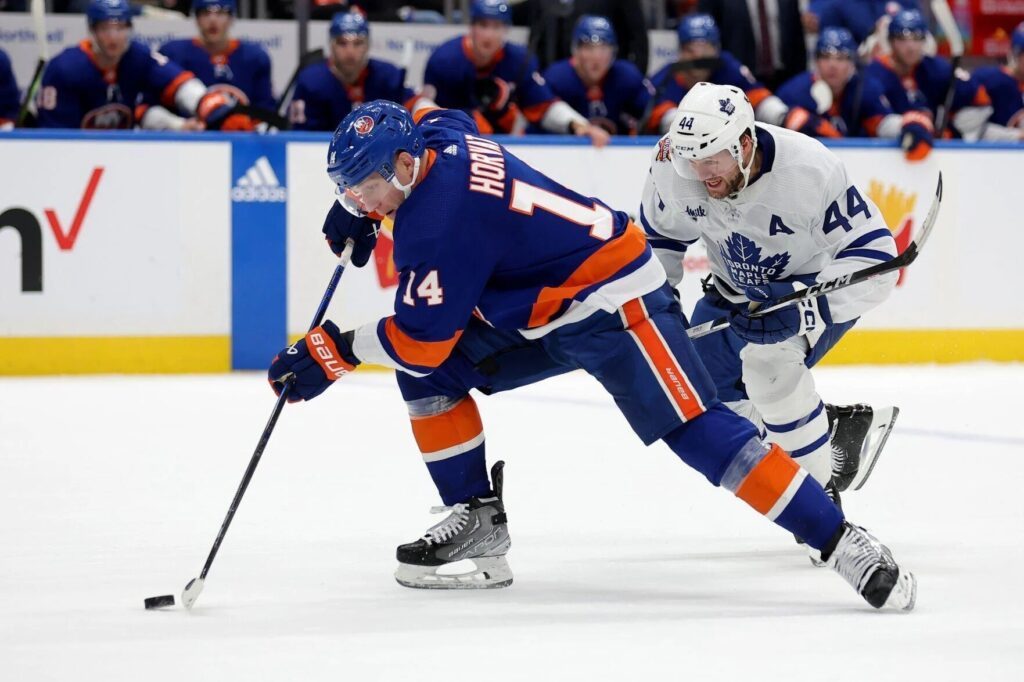
There is a lot of focus on the team’s offense – which is somewhat justified because there is a clear pattern of low scoring in the playoffs – but it’s the defense that was clearly a massive issue all season long, and that includes an inability to facilitate offense.
It is hard to overstate how bad the Leafs were defensively and how much an improvement to respectability would improve their team overall. Among playoff teams in 2023-24, the Leafs:
- Gave up the second most goals against overall and fourth most at five-on-five in the regular season
- Recorded the second worst all-situations and five-on-five save percentage
- Finished with the worst penalty kill
Not only were the Leafs poor defensively – it should be noted that the forwards are also guilty contributors here – but they couldn’t move the puck at all. The Leafs recorded the lowest percentage of goals scored by their defense in the NHL last season (and the second-lowest goal total by a defense unit overall) and the fourth-lowest share of points by their blue line. Half of their playoff defense – Simon Benoit, Joel Edmundson, and Ilya Lyubushkin – combined to score all of one goal vs. an NHL goalie last season (and none of them did it as a Leaf; Benoit’s one goal was an empty netter from his own goal line). Morgan Rielly didn’t score after his suspension, either.
At the end of the day, the Leafs were among the worst defensive teams, not just among playoff teams but league-wide. They hovered around the bottom 10 in most categories – essentially lottery team results. Their goaltending relied on Martin Jones to smooth things out as Ilya Samsonov struggled mightily and Joseph Woll got injured.
In January, the Leafs blew three games in a row in which they held the lead in the third period, and Sheldon Keefe lamented that they couldn’t expand the lead rather than locking the game down to close out wins. They didn’t even try to approach games with a lock-down mindset until the playoffs, where they did have some success at it, but it’s hard to completely change your game in the spring and achieve consistent results.
None of the teams that succeed in the spring suddenly play a different brand of hockey altogether when April rolls around. At minimum, they have been doing it for months leading into the playoffs, if not the whole season. The Leafs went from a team blowing opponents out of the water by overwhelming them offensively – second in the league in goals last season – to trying to scrape out 2-1 wins in the playoffs.
For the Leafs, the final few weeks of the regular season consisted of the entire team force-feeding Auston Matthews pucks in the chase for 70; Max Domi needlessly fighting, getting injured, and missing time; Joel Edmundson coming to a new team and sitting for three weeks before later noting he could have played if it was playoff time (he looked rusty upon returning, to say nothing of not building any chemistry with a partner on a new team), and putting together line combinations for long stretches (Knies – Holmberg – Robertson) that the coach readily admitted would not be real playoff lines.
All the while, the team’s power play continued to struggle without notable changes, and the penalty kill returned to mediocrity once Mitch Marner rejoined the lineup as they booted Connor Dewar off the unit. This continued an annual trend of puzzling lineup decisions down the stretch of the season and into the playoffs. What, exactly, was about winning – or preparing to win – in the final four or so weeks of the season?
It is very difficult to be competitive in the regular season or playoffs if you are that bad defensively and in net on your own half the ice, along with poor special teams and mailing it in down the stretch. The Leafs posted the worst points percentage of any playoff team in the final 30 days (a full month) of the regular season. Other than cementing themselves as a playoff team, the Leafs were not a threat at the top of the standings. They finished 10th overall and didn’t make Florida or Boston think twice.
Divisional play
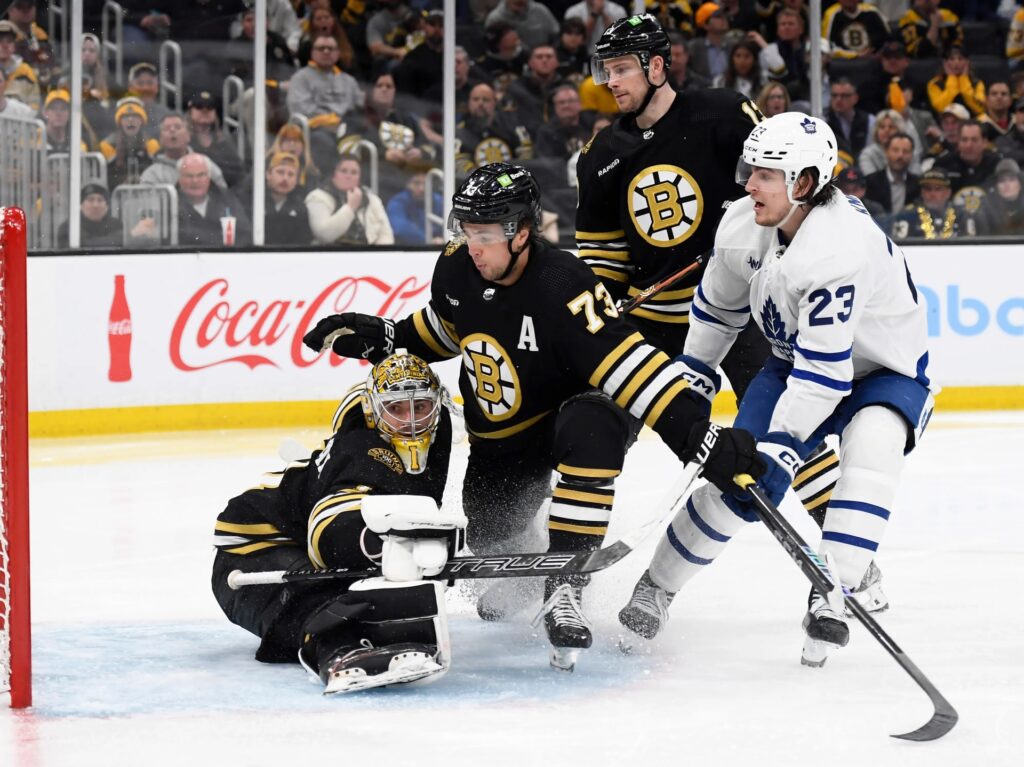
Speaking of the division, if there is one thing I regret when looking back at our coverage of last season, it is not discussing the Leafs’ in-division record more. They were 11-12-3 against their division rivals last season. That was tied with the Sabres for the second-worst mark in the division, ahead of only the Montreal Canadiens.
Sheldon Keefe’s comment at the end of his tenure, “When teams play the Leafs, they set up the game for the Leafs to beat themselves,” rang true in this regard. Over 82 games, teams go into games worrying about their own play and focusing on themselves (Craig Berube even said as much when he was hired and asked about playing against the Leafs). A division game offers a bit more familiarity and importance, lending to more team-specific adjustments and defined matchups.
The Bruins swept the Leafs in the regular season, winning eight of 11 overall when we include playoffs. Toronto split the season series against the Panthers (including the strange shootout game) and against the Lightning (The Leafs’ two wins against them were on two huge third-period rallies after Tampa built a big lead; Andrei Vasilevskiy didn’t play either game. The one Tampa win was the last game of the season).
The Senators and Red Wings each won their season series against the Leafs, while the Sabres ran up a 9-3 blowout in one game, to say nothing of the Ridly Greig ordeal in Ottawa. One of the Bruins’ wins came as the Leafs traveled to Boston after playing the night before to play a rested Bruins team that just so happened to schedule a ceremony during a weekday game to celebrate their Cup victory 15 years earlier. The Bruins proceeded to beat Toronto comfortably.
The Leafs got punked multiple times within their division. These games should be circled and approached with an extra pep in the step, but the Leafs really only did that one time against Florida late in the season. The teams that knew the Leafs best generally played well against them.
Conversely, the Leafs’ 24-6-2 record against the Western Conference was not just the best mark of any team in the East against the West but also the best record of any team in one conference playing against the other in the league. The Leafs are extremely talented, and when teams attempt to play them straight up instead of following the simple formula Keefe outlined, they run the risk of the Leafs blowing their doors off.
The Leafs built up a 5-1 lead against the Oilers despite missing multiple contributors. They then held on for dear life at the end. Another matchup that springs to mind is the game against Vegas, where the Leafs ran up a 7-3 win (it was 6-1 after the second period). In the rematch a few weeks later, Vegas clamped the game down and won comfortably on the back of a tight defensive effort. The final score was 6-2, but it was really a 4-2 game with an empty netter and a late goal immediately after once the game was over as a contest.
A team generally has to go through its division to advance in the playoffs. On a wider scale, the generally accepted blueprint throughout the league for beating the Leafs needs to be addressed. I don’t think this is a case, “there’s a formula to beat every team,” so much as it’s “when the chips are down, we know how to beat the Leafs.” The Leafs struggle to react properly every spring. It’s always the same movie.
Playoff preparedness
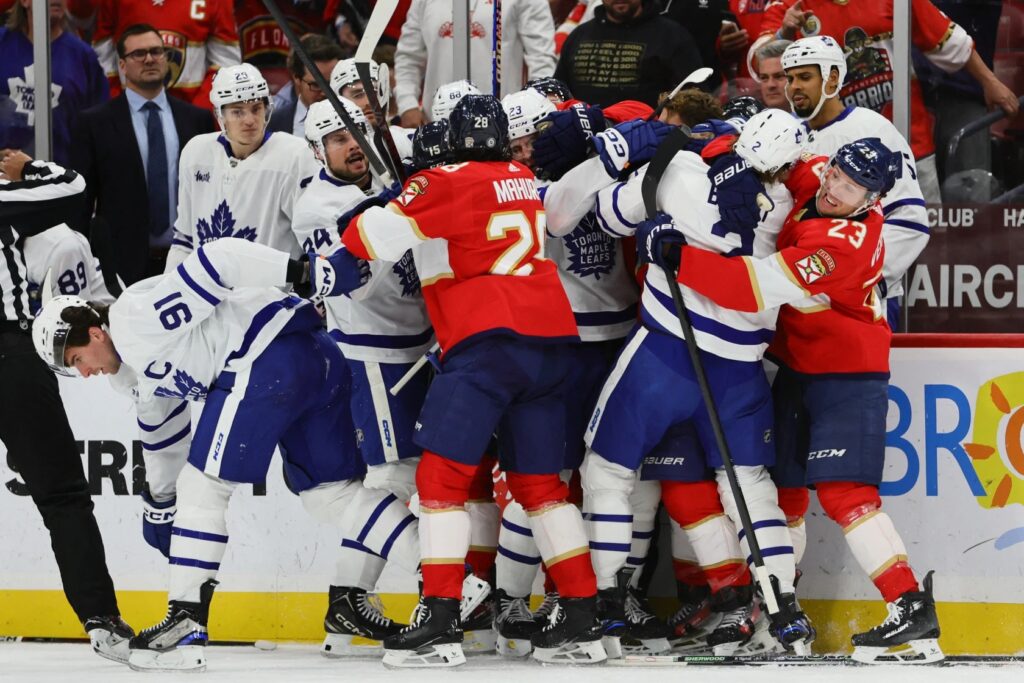
Ultimately, I will focus more on the above-mentioned areas next season. These are largely fixable areas, and this should be a good to really good team, depending on a few key factors like goaltending and youth development. The question of whether they are better defensively was always going to be an obvious one, but how do they fare against their division rivals, and how do they prepare for the playoffs down the stretch?
In fairness to the organization, I think they are identifying a lot of the same areas for improvement. They overhauled their entire coaching staff and focused on improving their defense and goaltending. New assistants will run the power play and penalty-killing units, and a coach with a winning pedigree will be at the helm. Two of their three new coaching hires have won the Cup.
The Leafs have rarely lost because they lacked talent. In more than a few playoff series, they have been outcoached and struggled to make any sort of real adjustments, especially on special teams. I would also be surprised if Berube sat idly by as the team played unserious hockey for a full month ahead of the playoffs. The Leafs aren’t a team that is any place to coast down the stretch and flip a switch when the big games start. They need to clean up these areas.
Chris Tanev is a legitimate top-four defenseman, while OEL gives them another credible defenseman who provides much-needed offense and can perhaps be a #4. If he can’t, they still have Timothy Liljegren, who has flashed potential in the #4 spot. Between the two Swedes, they can platoon it, to say nothing of Simon Benoit, who improved steadily as the season went on. It is an improved unit, but we will see just how much it improves the bottom-line numbers. Last season, they gave up a ton of goals, made life difficult on their goalies, and did not provide basically any offense or scoring skill the other way.
The other part of the equation is the Leafs’ forwards. Last season, the team lacked checkers and forwards with defensive acumen. They added Connor Dewar at the trade deadline to give them a forward with some checking capabilities, but it’s not nearly enough. They’ve added zero NHL forwards in the offseason, and none of the potential wildcards to make the team (rookies or journeymen like Alex Nylander) could take regular shifts against top players and perform well defensively.
Bobby McMann showed well defensively, and he played just 56 games – a full season from him helps, in theory. So, too, would more than 52 games from Calle Jarnkrok. A full season of Dewar also helps. Hopefully, Matthew Knies and Pontus Holmberg, who flashed some ability defensively last season, will develop further. There is some room for internal improvement, for sure, but it feels like this will be a need at the trade deadline.
Brad Treliving will almost certainly need to add a forward of note during the season either way. They need to get to the deadline first, though, so in the meantime, can the improvements on defense, coupled with some internal growth and potentially a push for more attention to detail, improve the bottom line?
The Leafs have two talented goalies who are unproven as starters in net. They will need to make their lives a little easier with the defensive environment, just as they did once with Jack Campbell and then Ilya Samsonov in his first season in Toronto.
Ultimately, it will always come back to the core. Everyone is largely aware of—and increasingly frustrated by—this reality. But the Leafs were also mediocre in net and defensively while struggling against their divisional opponents. Their special teams were a liability yet again when it mattered.
The Leafs almost got through Boston – I think they would have won if they had been as healthy as the Bruins – but they weren’t good enough to go anywhere beyond the first round. The team needs to improve across the board and put themselves in a position to challenge for the division title. Improving in those areas while maintaining their status as a top-end offensive team (in the regular season) will put them in a stronger position to achieve the ever-elusive playoff success everyone in Toronto is pining for.
















